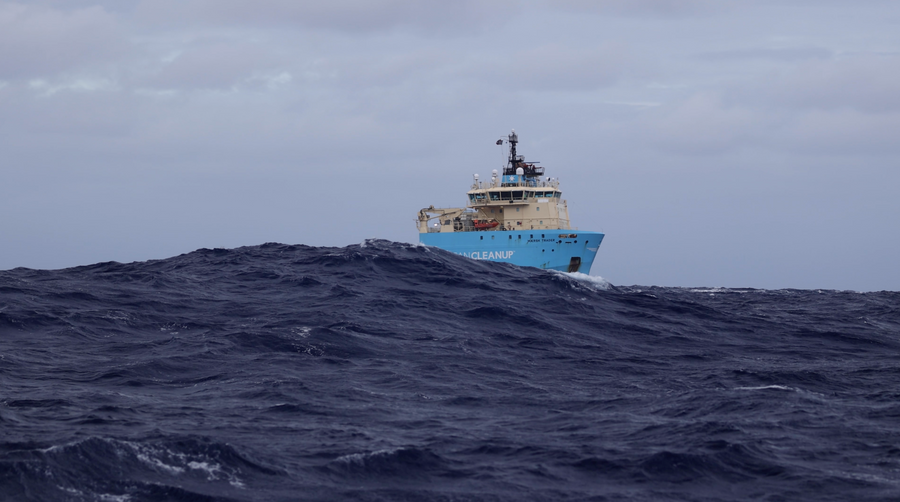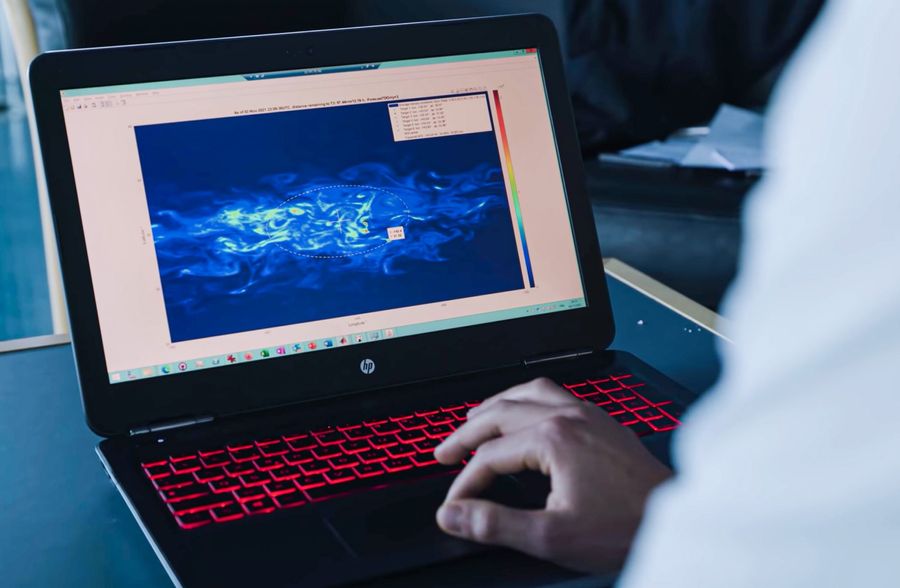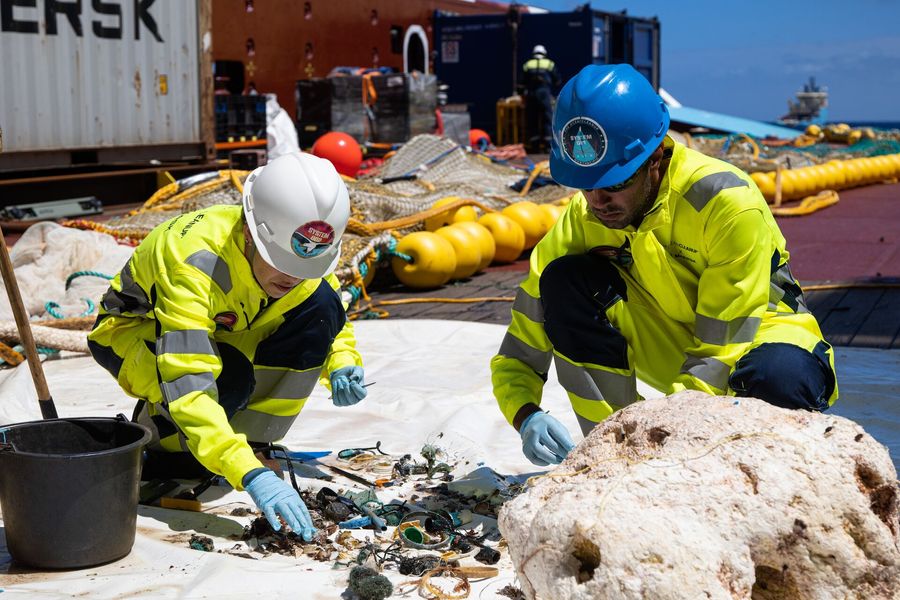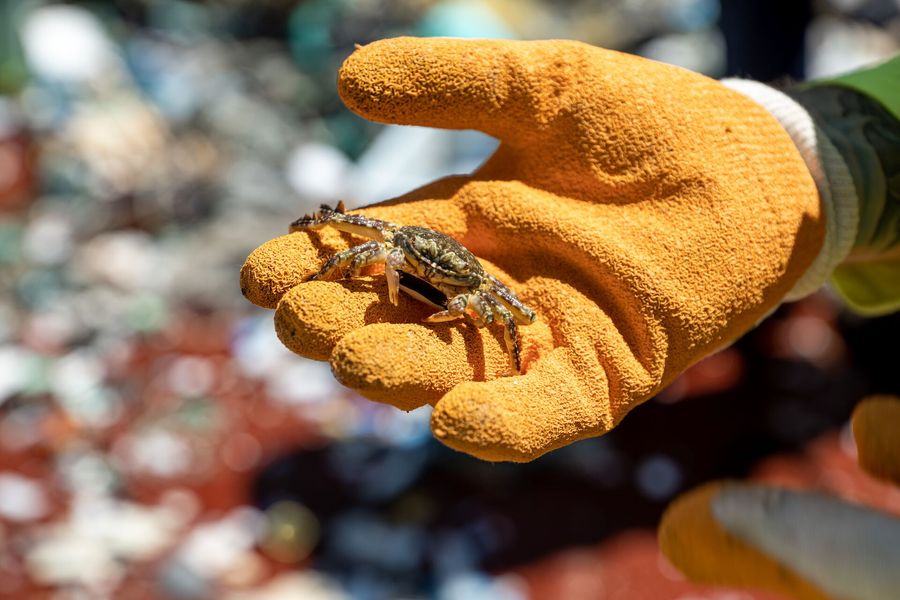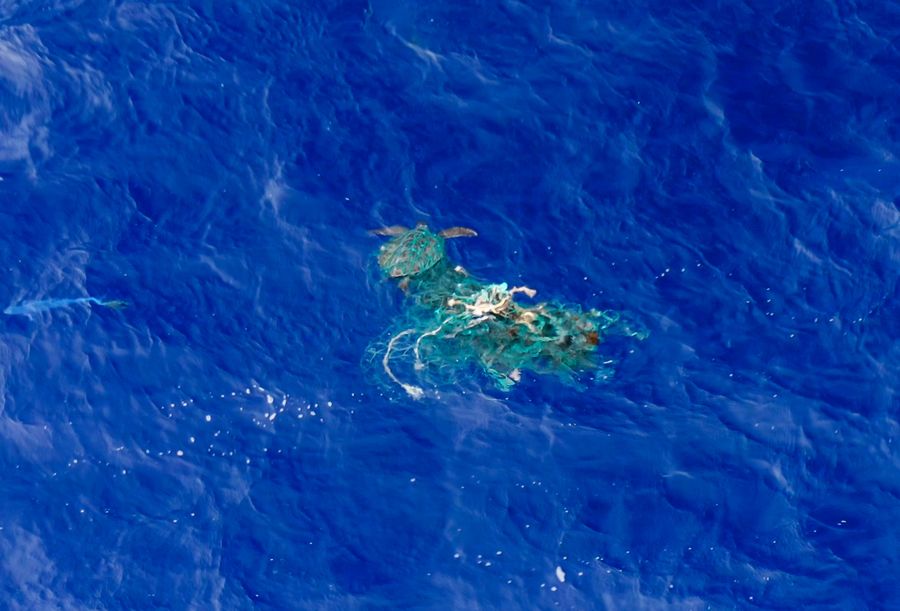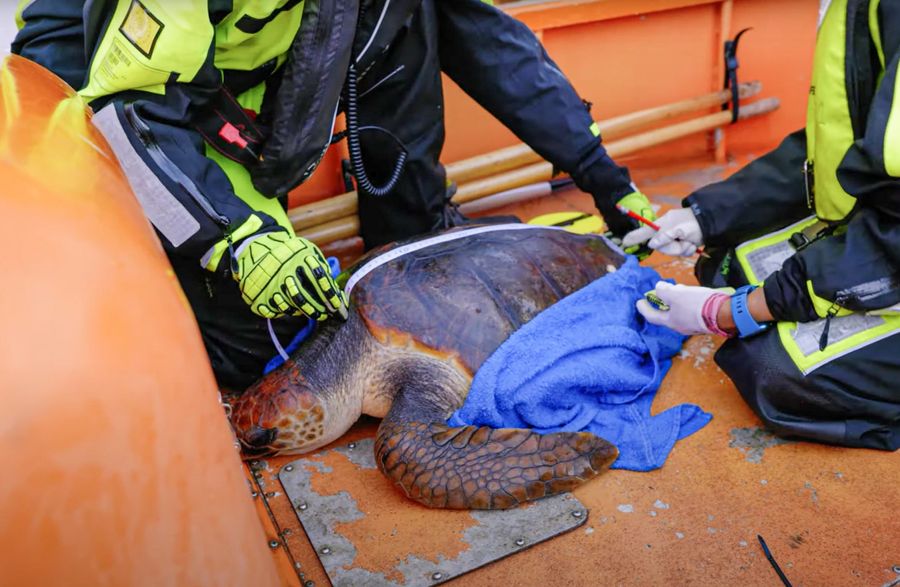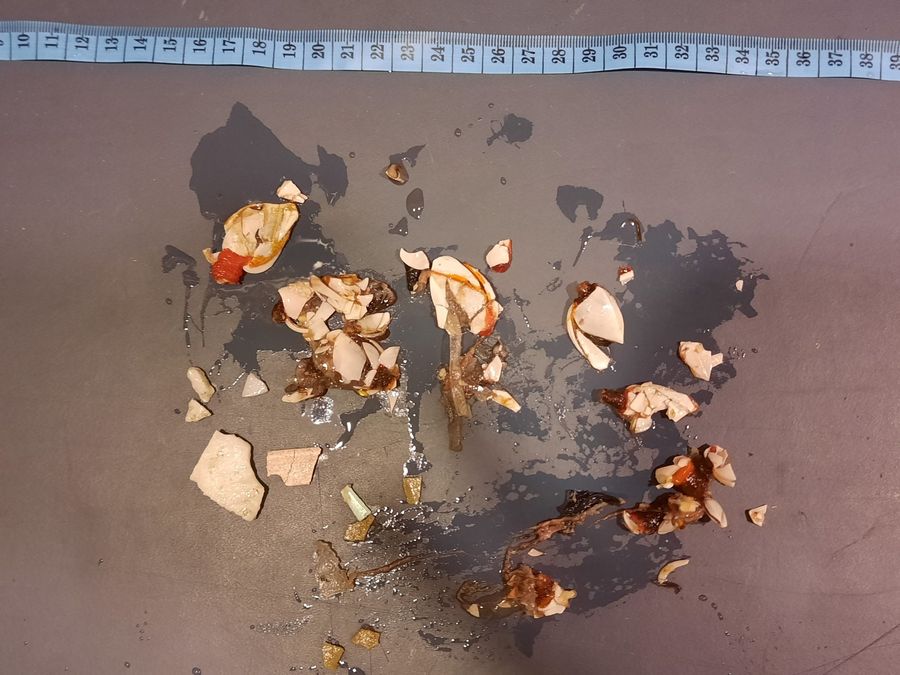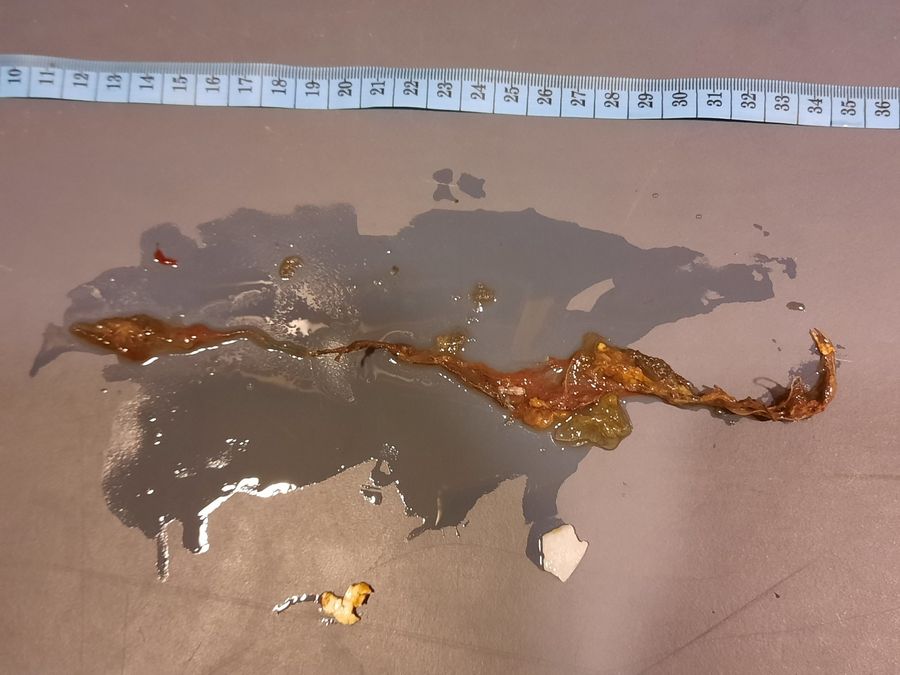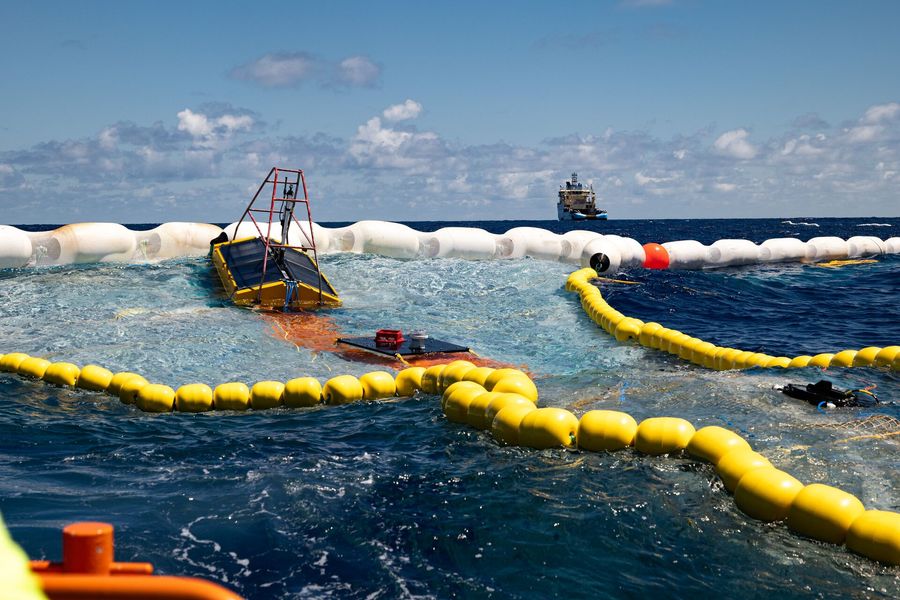
System 002: Mid-Term Evaluation
Back to updatesThe Ocean Cleanup’s mission is to develop and scale technologies to rid the world’s oceans of plastic. We do this because of the ecological and economic damage ocean plastic pollution causes. After finalizing our trials, we have proven technology for our ocean operations – and we can now focus on scaling up from System 002 toward a system that is three times the size and that will serve as the blueprint for further scale-up: System 03. We will keep System 002 operational until it is replaced next year, in order to maximize both our learning and our impact.
In the five months since we started our campaign with System 002 (a.k.a. Jenny), we have recorded 40,273kg plastic collected (or 1/2500th of the Great Pacific Garbage Patch). Effects on marine life were more negligible than expected in the initial assessment published in July 2021, but we can observe that winter conditions have negatively affected cleanup efficiency.
OPERATIONAL RESULTS (JULY–DECEMBER 2021)
Since the launch in July, we have had 47 days of operations, with an average catch of nearly 1000 kg of plastic per 24 hours. During this period, under the management of our offshore partner Maersk, the crew sustained zero injuries and avoided any safety incidents. Our efficiency in November and December was slightly below average, mainly due to weather conditions. Our current hypothesis is that this results from the reduced efficiency of the wing sections (overtopping, underflow) and increased vertical mixing of the plastic.
Moreover, time windows for major operations (deployment, extraction, and recovery) have been shorter and less frequent in the winter months. At times, we have had to wait several days for an opportunity to perform these operations. Still, we have remained operational during the winter months, and the system has continued to catch plastic in the higher sea states that come with the season.
Jenny sustained some wear-and-tear damage in the rougher conditions. This resulted in downtime to conduct required repairs, with a need for partial recovery of the system – waiting for weather windows to make these recoveries also caused a loss of operational time. The recorded towing forces on the cleanup system align with our computer simulations. The chosen ratio between length and span of the system (in other words: the depth of the U-shape) is also performing well.
During the campaign, we continued to collect data to further improve our understanding of plastic behavior and system performance, which are all fed into the design work for System 03. We also use the data on plastic behavior in our models for hotspot forecasting, which helps us to determine where to navigate in order to optimize catch efficiency. We have observed significant variations in the amount of plastic harvested per unit of time, which underlines that optimized routing of the cleanup systems will strongly influence how many will be required to clean up the patch.
ENVIRONMENTAL IMPACT: MITIGATION AND OBSERVATION
In order to operate System 002 safely in the ocean environment, we introduced a combination of mitigation measures. First, we tow at extremely low speeds (0.5 to 1.5 knots), while having an escape route at the bottom of the retention zone. We have noticed that thousands of fish that enter while the system moves forward have been safely exiting through this opening. We also provide visual cues to marine life so that it can safely avoid or navigate the system using brightly colored materials and flashing lights. The addition of audio deterrents further enhances the detectability of the system.
View this post on Instagram
Next, multiple breathing ports have been created in the retention zone. These guarantee access to air for marine mammals, birds, or turtles that would have accidentally ended up in the system. As a final mitigation procedure, the system is equipped with a remote-triggered quick release. This release can open and flush the end of the retention zone on those rare and unwanted occasions when marine life becomes entangled in this usually enclosed part of the system.
Protected Species Observers (PSOs) are onboard our vessels to watch for marine animals 24/7 during transit to and from the Great Pacific Garbage Patch and during deployment events. The PSOs document all bird species, marine mammals, and sea turtles observed on their shift. In addition to binoculars, they make use of drones or, if the weather allows, are able to more closely approach the system on the water in a Fast Rescue Craft (FRC). We have also equipped the system with underwater cameras in order to monitor animals entering (and leaving) the retention zone.
BYCATCH ASSESSMENT
We designed our cleanup system to catch plastic, not fish. Nevertheless, we cannot entirely avoid the occurrence of bycatch. Still, we want to keep the amount of biological material we collect as low as possible, compared to the plastics retrieved. Total bycatch includes fish, mollusks, crustaceans, and barnacles. These organisms were separated by type, counted, photographed, weighed, and returned to the water if alive, or frozen for further analysis.
Data show that the system is performing well. On a total catch of some 40 tons of plastic, we collected 141kg of biological matter or 3.6g for every 1,000g of plastic collected. Also, we don’t find neuston bycatch in every extraction, indicating – contrary to some beliefs – that neuston and plastic concentrations do not necessarily coincide. We found no other species than Velella velella as bycatch. No other neuston, such as Porpita porpita, Halobates spp., pteropods, isopods, or heteropods were determined. Assessment of Velella is especially difficult, since they are often faded, indicating that the organisms have deceased before we collect them. More bycatch data will be necessary to complete our assessment of the possible impact of our activities on the neuston population.
We note that the data collected and processed to date is preliminary. We need to conduct more analysis to update the initial Environmental Impact Assessment, which is in preparation and will be published in Q2 2022. In addition, the data collected will assist with System 03 design to maximize plastic collections, while minimizing the impacts of operations.
PROTECTED SPECIES OBSERVATIONS
Over the entire campaign, our PSOs observed several protected species, ranging from whales and dolphins to sunfish (Mola mola), turtles, and sea lions. On two occasions, we saw a need to intervene.
One sea turtle was spotted trapped in a ghost net. The crew brought the distressed animal on board to free her from the net and safely put her back in the water.
On another occasion, we noticed a sea turtle caught in a pocket between the outer and inner mesh of the retention zone. The crew freed the turtle and took it on board for observation. The animal had been able to get between the mesh layers through an unintended gap that we could close while at sea, mitigating this risk for the future. After confirming the animal was uninjured and in good health, the crew released it back to the ocean, away from the system and the towing vessels.
We were harshly reminded of the urgency of ocean plastic pollution when we found two dead juvenile loggerhead turtles among the extracted plastic. During the autopsy, the PSOs detected a significant number of plastic fragments – ranging in size from 2mm to ~30mm – all along the digestive tract of both turtles, along with a more than 200mm-long piece of monofilament fishing line in the smaller animal’s intestines. Possibly, both animals died due to extensive exposure to ocean plastic. Our in-house marine biologists will be working with renowned sea turtle specialists for an in-depth review of our findings, and a complete evaluation will be part of the Environmental Impact update referenced before.
Most likely, it would not have made a difference in this instance, but our monitoring measures did not spot how and when the turtles entered the system. During this catch, the lights to support the view on the underwater cameras malfunctioned, and we were blind during the night. Ahead of Jenny’s next deployment, we will repair the lights on the camera skiff. We will also review all mitigation measures to prevent bycatch, ensuring fully that they function as intended. The quick-release mechanism that has not shown the level of reliability we wanted, for example, will require an update. This experience is a timely reminder for us to stay vigilant, and to maintain our inspection frequency and intensity while continuing our cleanup operations.
NEXT STEPS
Based on our evaluation of the first months, we have concluded that we – by taking the afore-mentioned precautions – can confidently and carefully carry through with the System 002 campaign and keep learning by doing. We face an exciting journey toward upcoming milestones, with the development, launch, and deployment of System 03 later in the year.
Of course, we will keep our supporters posted, and we will continue to report our progress here on our website and via our social media channels.


